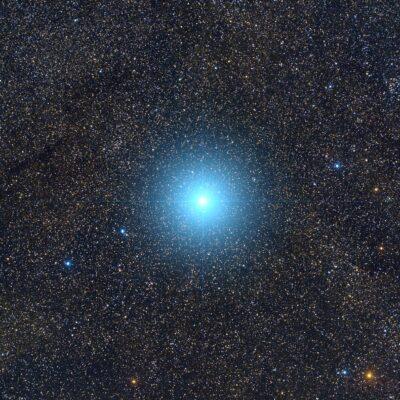A giant laboratory, weighing about 85 elephants and the size of a large football field, orbits the earth at an altitude of 400 km above our heads. The time it takes for this laboratory to orbit the Earth is just over an hour and a half; You know, the highlights of the International Space Station !!

The dream of an International Space Station (I.S.S) began to become a reality in 1998 with the launch of the first rocket from Russia. Twenty-two years later, the International Space Station has become one of the most important achievements in human history. The International Space Station, of which astronauts from many countries are often a part, is orbiting the Earth as a large laboratory, spinning fast .. !!
It is estimated that this giant laboratory orbited the earth more than 1.5 million times. Behind the International Space Station is a consortium of 16 countries, including the United States, Canada, Japan, Russia, Brazil, France, Denmark, Germany, Italy, the Netherlands, Norway, Spain, Sweden, Switzerland and the UK. The first part of the laboratory was launched into space in 1998, but its long-term occupants arrived on November 2, 2000.

The station has been occupied continuously for 20 years since then. The spacecraft has already flown to the space station with 63 researchers. A total of 241 people from 19 countries have gone to the space station. United States (151), Russia (48), Japan (9), Canada (8), Italy (5), France (4), Germany (3), Belgium, Brazil, Denmark, Great Britain, Kazakhstan, Malaysia, Netherlands, The number of tourists is one each from South Africa, South Korea, Spain, Sweden and the United Arab Emirates.

The International Space Station presents astronauts with completely different views and experiences from Earth. Those on the space station orbit the Earth every 90 minutes and watch the sunrise and sunset every 45 minutes. The International Space Station is mainly conducting experiments to overcome the challenges faced by humans in space travel.

Continuous space travel can weaken a passenger’s muscles and bones. This is because gravity is much, much less in space than on Earth. There is micro-gravity in space. Numerous studies are currently being conducted at the International Space Station, including experiments to address the resulting weakness of the arms and legs, and the cultivation of microgravity in space. Experiments at the International Space Station will play a major role in equipping humans for long-distance space missions such as the Mars mission in the future.
It is remarkable that 20 years have passed since the permanent inhabitants of space. On November 2, 2000, scientists arrived at the International Space Station with the help of the first Soyuz TM-31 spacecraft. NASA estimates that the plant will be operational by 2024. The International Space Station (ISS), with all its facilities, is considered to be the largest man-made engineering marvel after the pyramids in Egypt.

It is 72.8 meters wide, 108.5 meters long and weighs 420 tons.
A distance equal to the total distance to and from the moon orbits the earth in a day .. !!!




Recent Comments